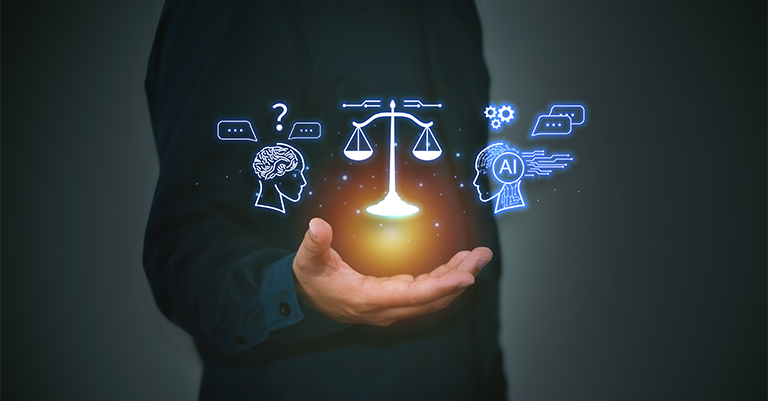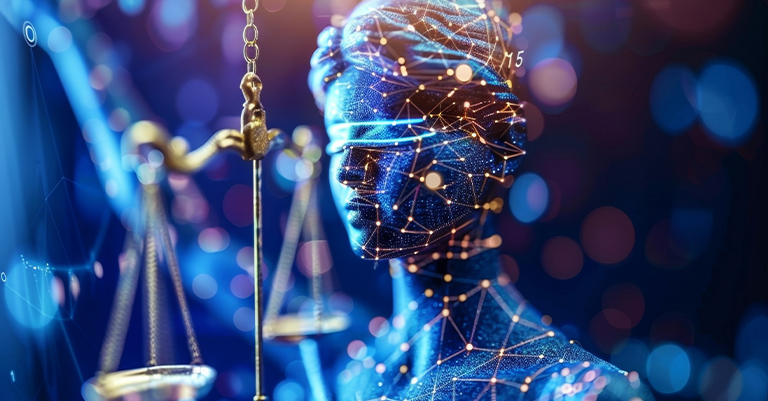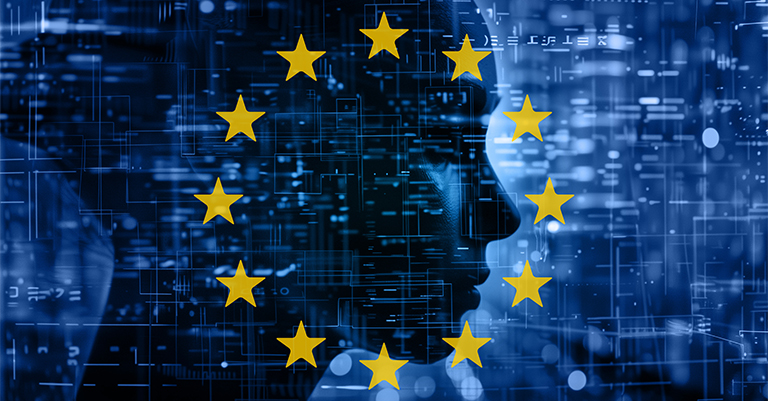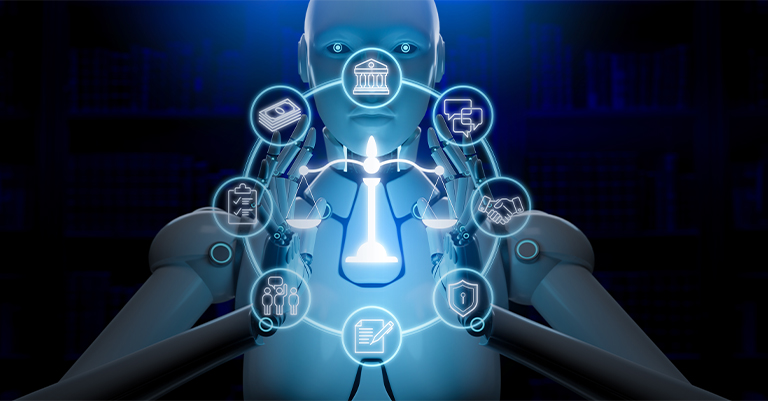How to Manage AI Bias in Algorithms: A Comprehensive Guide
As AI becomes a bigger part of our daily lives, it greatly shapes our decisions and social norms. It suggests movies to watch and decides if we qualify for loans. But this progress comes with a big challenge – AI bias. When AI is biased, it can create unfair outcomes that worsen existing social inequalities, especially for marginalized groups.
Fixing AI bias is key to making sure AI systems are ethical, clear, and fair. It means understanding where bias comes from, finding unfair patterns, and using strategies to reduce these issues. This blog will explain what AI bias is, why it’s important, and how developers, businesses, and regulators can work together to build fairer AI systems. Whether you’re a tech junkie or a small business owner, this guide will help you understand the challenges of AI fairness.
Understanding AI Bias

AI bias happens when an algorithm consistently gives unfair results. This usually occurs when the algorithm unintentionally favors or disadvantages certain groups based on things like gender, race, age, or income level. For example, a biased AI might suggest lower credit limits for minority groups or reject job applicants because of their gender-specific names.
Types of Bias in AI Algorithms
Bias in AI can appear in various ways, often leading to unfair outcomes. Understanding these biases is key to building fairer AI models. Identifying the sources of bias—whether in data, algorithm design, or societal structures—helps developers and stakeholders address them. Here are three main types of bias: data bias, algorithmic bias, and societal bias.
- Data Bias: This happens when the training data doesn’t reflect the whole population. For example, a facial recognition system trained mainly on lighter-skinned faces might not work well on darker-skinned ones.
- Algorithmic Bias: This occurs when the design of an algorithm gives more weight to certain outcomes. For instance, it might focus more on one demographic group due to an imbalanced feature weight.
- Societal Bias: This mirrors the existing social inequalities in society. If data contains past inequalities, AI systems can continue or even worsen these biases.
Examples of Bias in Real-world AI Systems
Bias in AI isn’t just theoretical; it has real-world effects that can deeply impact people and communities. In areas like hiring, law enforcement, and healthcare, biased AI systems can worsen existing inequalities and create new forms of discrimination. Understanding how bias shows up in these situations is crucial for solving these problems. Here are some examples of how bias can shape AI outcomes, highlighting the need for fairer and more inclusive AI:
- Hiring Algorithms: Some tools favor candidates with resumes similar to current employees, often disadvantaging women or minority applicants.
- Predictive Policing: AI systems in law enforcement have been criticized for focusing on minority neighborhoods, reflecting past arrest data instead of real crime patterns.
- Healthcare AI: Certain diagnostic tools work less accurately for underrepresented groups, leading to unequal medical advice and treatments.
Why AI Bias is a Problem

Bias in AI is not just a technical issue—it presents serious challenges for society. When biased algorithms affect important decisions, they can worsen existing inequalities, especially for marginalized groups. Beyond practical effects, AI bias also raises ethical questions, challenging the idea that AI is always objective. Additionally, biased results can undermine public trust, making it harder for people to accept and use AI technologies. Understanding why AI bias matters is essential to solving these problems and ensuring that AI is used fairly and responsibly.
Impacts on Decision-Making
AI is now often used to make decisions, like in hiring, loan approvals, and criminal sentencing. When these systems have bias, they can make existing inequalities worse, limiting opportunities or services for marginalized groups. For instance, a biased loan approval system might regularly reject applicants from certain communities, leading to financial exclusion.
Social and Ethical Implications
AI bias brings up important ethical questions about fairness and justice. While AI promises to be objective, biased algorithms can produce results that are just as discriminatory as human decisions. This contradiction weakens the idea of AI as a tool for positive change. It is crucial to make sure that AI respects human dignity and doesn’t continue harmful stereotypes.
Trust and Adoption Barriers
Bias in AI can weaken public trust, which is essential for AI’s widespread use. If people see AI systems as unfair, they may avoid using them. This hesitation can slow down progress and limit AI’s potential benefits in fields like healthcare, education, and smart city development.
Root Causes of AI Bias

Understanding what causes AI bias is crucial for solving it. Bias in AI often comes from several sources, including data issues, algorithm design, and human influence during training. If training data is unbalanced or biased, AI models can learn and repeat these biases, leading to unfair results. Likewise, flaws in how algorithms are designed can cause certain features to get too much weight, and human biases can unintentionally shape how models behave. By looking at these root causes, we can better pinpoint where bias starts and work towards creating fairer AI systems.
Data-Related Issues
Most AI models need large amounts of data to learn patterns. If this data is skewed or unbalanced, the AI can reflect those biases. For example, if an image recognition system’s dataset has more pictures of cars than trucks, the model may become better at recognizing cars than trucks.
Algorithmic Design Flaws
The design of an algorithm greatly affects whether it creates biased outcomes. Some algorithms may unintentionally emphasize features that are linked to certain groups, leading to biased decisions. For example, in hiring algorithms, variables like zip codes might be linked to race or socioeconomic status, which can introduce bias.
Human Biases in Model Training
Even developers with good intentions can accidentally embed their own biases into algorithms during training. If a model is trained to focus on certain traits based on a developer’s assumptions, these biases can become part of the AI’s decision-making process.
Strategies to Detect AI Bias

Detecting bias in AI systems is crucial for creating fair and balanced algorithms. Developers can use various fairness metrics and tools to find and address bias. Fairness metrics help check how well a model works for different demographic groups, revealing any possible inequalities. Metrics like demographic parity, equal opportunity, and disparate impact help to see if certain groups face unfair treatment. Additionally, tools like IBM AI Fairness 360 and Fairlearn can help evaluate and reduce bias. By using these methods, AI developers can make their models more inclusive and fair.
Fairness Metrics
Measuring fairness in AI involves evaluating how the model performs across different demographic groups. Common metrics include:
- Demographic Parity: Ensures that a model’s outcomes are similar across different groups.
- Equal Opportunity: Focuses on equal true positive rates for all groups.
- Disparate Impact: Measures if a model has a substantially different impact on different groups.
Bias Detection Tools and Frameworks
Various tools have been developed to help identify bias in AI systems:
- IBM AI Fairness 360: An open-source toolkit to assess, understand, and mitigate bias in machine learning models.
- Fairlearn: A Python library that provides a suite of fairness metrics and bias mitigation techniques.
Techniques for Mitigating AI Bias
Mitigating bias in AI requires an active approach, utilizing various techniques to ensure fairness throughout the model development process. One of the foundational steps is improving the quality of training data through preprocessing and cleaning methods, such as resampling and oversampling underrepresented groups. This helps create more balanced datasets, reducing the likelihood of biased outcomes. Beyond data, adjustments to the algorithms themselves, including re-weighting and adversarial debiasing, can directly address disparities in model predictions. Additionally, fostering inclusivity during model training by involving diverse perspectives and experts helps to identify and address biases early on. Together, these strategies work to create AI systems that are more fair and equitable.
Data Preprocessing and Cleaning
The first step to reducing bias is to improve the quality and balance of the training data. Techniques like resampling, oversampling underrepresented groups, and data augmentation can help create a more balanced dataset. Removing sensitive features such as race or gender can also reduce bias, though care must be taken to avoid inadvertently introducing proxy variables.
Algorithmic Fairness Adjustment
- Re-weighting: Adjusting the importance of certain data points to reduce bias.
- Adversarial Debiasing: Using adversarial networks to reduce the correlation between sensitive attributes and the model’s predictions.
- Post-processing Adjustments: Adjusting the model’s outputs to ensure fairness, such as changing decision thresholds for different groups.
Inclusive Model Training Practices
Including diverse perspectives during model training can help identify potential biases early in the development process. Engaging with domain experts, ethicists, and community representatives ensures that models are built with a comprehensive understanding of potential social impacts.
Role of Regulation and Standards

Regulation and standards play a crucial role in addressing AI bias and ensuring that AI systems operate in a fair and accountable manner. As the use of AI expands, governments and international organizations are increasingly implementing frameworks to oversee these technologies. For example, the European Union’s AI Act categorizes AI systems by risk level, imposing stricter regulations on high-risk applications to protect users. Alongside governmental efforts, industry standards like ISO/IEC 24028 and company-led initiatives, such as Google’s AI Principles and Microsoft’s Responsible AI guidelines, aim to set benchmarks for ethical AI practices. Additionally, global collaborations, including the Partnership on AI and IEEE’s initiatives, help create shared frameworks for AI ethics, fostering a collective approach to reducing bias and promoting fairness.
Overview of AI Regulatory Frameworks
Governments and international bodies are increasingly recognizing the need for AI regulation to ensure fairness and accountability. The European Union’s AI Act aims to classify AI systems based on their risk levels, implementing stricter regulations for high-risk applications.
The Role of Government and Industry Standards
Standards like ISO/IEC 24028 provide guidelines for building AI systems that are transparent and fair. Industry-led initiatives, such as Google’s AI Principles and Microsoft’s Responsible AI guidelines, aim to set benchmarks for ethical AI development.
Global Initiatives for Ethical AI
Organizations like the Partnership on AI and IEEE’s Global Initiative on Ethics of Autonomous and Intelligent Systems work to establish common frameworks for AI ethics, promoting collaboration across sectors to address bias and other ethical concerns.
Building Ethical AI in Practice

Building ethical AI requires a commitment to fairness, transparency, and collaboration throughout the development process. For AI developers, following best practices like maintaining transparency, ensuring explainability, and validating models across diverse datasets is essential to creating trustworthy algorithms. Companies can support these efforts by establishing AI ethics committees, conducting regular bias audits, and providing training on bias detection and mitigation. Furthermore, creating ethical AI is a collective effort that involves collaboration between developers, regulators, academics, and the communities impacted by AI systems. By working together, stakeholders can ensure that AI aligns with societal values and operates ethically.
Best Practices for AI Developers
Developers should follow principles like transparency, explainability, and fairness when designing algorithms. This involves documenting the design process, explaining decision-making, and validating models across diverse datasets.
Strategies for Companies to Ensure Fairness
Companies should establish AI ethics committees, implement bias audits, and conduct regular training for employees on bias detection and mitigation. Integrating these processes into the AI lifecycle ensures that bias is addressed at every stage.
Collaboration Between Stakeholders
Building ethical AI requires collaboration between developers, regulators, academics, and affected communities. Stakeholders must work together to create AI systems that align with societal values and ethical standards.
Future Directions and Challenges
As AI technology continues to advance, new challenges in addressing bias are emerging, making the pursuit of fairness more complex than ever. The increasing use of deep learning and large language models, which learn from extensive and often unstructured data, introduces unique difficulties in detecting and mitigating bias. In this evolving landscape, research in AI ethics plays a vital role, helping to develop innovative methods and frameworks to ensure fairness. The path to truly unbiased AI is intricate, requiring both technological advancements and a strong commitment from society. However, through continued collaboration between public and private sectors, there is hope for building AI systems that are more fair, trustworthy, and aligned with the diverse values of global communities.
Evolving Challenges in AI Bias
As AI becomes more sophisticated, new types of bias may emerge. The rise of deep learning and large language models presents challenges, as these systems learn from vast amounts of unstructured data, making bias harder to detect.
The Role of AI Ethics Research
Ongoing research in AI ethics and fairness is crucial to developing new techniques and frameworks for bias mitigation. Universities, think tanks, and industry research teams must continue to push the boundaries of what is possible in this area.
The Road Ahead for AI Fairness
The journey towards fully unbiased AI is complex, requiring both technological innovation and societal commitment. With ongoing efforts from both public and private sectors, we can hope to build AI systems that are more equitable, trustworthy, and aligned with the values of diverse communities.
Closing Thoughts on AI Bias
Addressing bias in AI algorithms is crucial as AI increasingly influences our lives, from healthcare to finance and law enforcement. Tackling this challenge requires a deep understanding of the issues at play, such as data quality, algorithmic design, and existing societal inequalities. Early detection and mitigation strategies—like using fairness metrics and deploying bias detection tools—are essential to ensuring that AI models are inclusive and equitable. However, these technical efforts must be paired with a commitment to ethical principles, emphasizing transparency, accountability, and fairness.
Organizations need to integrate ethical AI practices into their development processes, engaging diverse perspectives and conducting regular audits. It’s not just about refining the technology; it’s about shaping a future where AI benefits everyone equally and avoids reinforcing existing disparities. While achieving unbiased AI is complex, the rewards are significant. Fair and inclusive AI can help bridge societal gaps, offering opportunities for innovation and positive social change. By confronting AI bias directly, we can ensure that AI not only advances technology but also contributes to a more just and equitable world. This effort demands continuous collaboration and a focus on aligning AI systems with our shared values.





